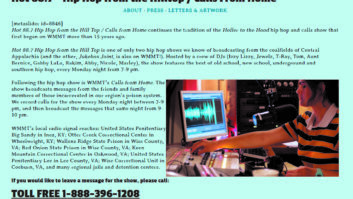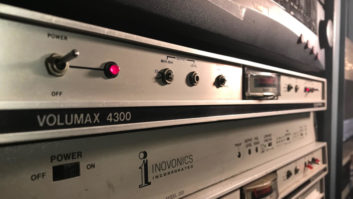We’re all aware that one of the primary social trends empowered by digital technology has been generally increased consumer personalization of products and services.
An example of this phenomenon is evidenced in the music world by the movement away from blockbuster hits and toward “catalog” material and emerging or lesser-known artists.
One recent study, conducted and reported by a respected music industry publication, The Lefsetz Letter, compared the overall music sales — both physical and digital — of the calendar year 2000 (the peak sales year to date for the industry) with sales in 2007, and found that the 2007 figures were down about a third (–36%) from the 2000 sales.
Then Lefsetz compared the individual sales of each of the top 10 selling records for those two years with one other (i.e., sales of the #1 record of 2000 compared to the #1 record of 2007, #2 with #2, and so on), which you would expect to approximately reflect the same one-third drop — but they did not.
Instead, the records that occupied each of the top 10 slots for 2007 were off from over 50 percent to nearly 70 percent compared to the sales for the records in those same positions for 2000.
Always in stock
This substantially disproportionate drop for the bestsellers of 2007 indicates that music sales are clearly trending toward greater diversity and choice.
One possible reason is that across that seven-year period, online music stores have made it possible to search, browse, sample and purchase a far wider variety of music than consumers ever could in any physical store.
In other words, a digital inventory allows the complete “Long Tail” to be kept in stock at all times, and as a result, the comet’s head is shrinking and its tail is getting fatter. (See the Sept. 1, 2006 edition of this column at rwonline.com if that reference escapes you.)
Closer to home, what impact do you think this consumer trend might have on the popularity of traditional radio formats?
In Long Tail terms, these formats are the very essence of a “head-only” selection, including purely the most popular hits. If this approach no longer adequately reflects consumer purchasing preferences, it may not hold as much value for the music industry as it once did.
One outcome of that understanding provides direct fuel for the new push toward performance royalties for terrestrial airplay of music recordings. If airplay doesn’t sell records like it used to, then the music industry is incented to seek a more direct form of payment from broadcasters themselves (like it gets in most other countries outside the U.S.).
On the other hand, there are other purveyors of music radio — Internet and satellite broadcasters — that do more closely embrace the trend toward greater choice and diversity with narrower formats.
They can do it because their environments allow them to operate more simultaneous services on a full-time basis. That and other efficiencies of digital processes (automation, etc.) allow them to build a viable aggregate audience with fewer listeners per service than terrestrial radio requires.
Ironically, this is not because these new media operators have more channels per se. The largest terrestrial radio companies actually own a far greater number of channels than any satellite or Internet radio service operates, but because of the geographic distribution of terrestrial channels, the same narrowing (or “niche-ing”) of formats cannot be applied there.
So these terrestrial radio groups run many of the same, broad formats, repeated over and over again in different markets.
Of course, the flip side of that coin is that terrestrial radio can serve up localized content, but it’s difficult to leverage that benefit into a music radio format. Highlighting local bands, promoting music venues in town and airing live or recorded music broadcasts from the region can only go so far, not to mention the additional expense and sometimes reduced listenership that these efforts might engender.
Moreover, recent management trends among large station groups have actually reduced localized content in general, which only exacerbates the problem, and negates the one advantage that terrestrial radio may have against this new competition.
These are all fairly obvious truths that the industry has been living with for a while, but viewed holistically, and with today’s heightened sense of urgency, what conclusions emerge?
A changing world
Consumption patterns are shifting, and these may significantly affect radio formatics, particularly for music.
Here are the high-level bullet points that influence any course corrections that terrestrial radio might consider:
- As blockbuster sales decline and niches grow in importance, music promotion will move away from traditional radio formats and seek more specialized outlets.
- As big names sell fewer records but continue to receive most terrestrial radio airplay, music labels will seek increased compensation to make up for sales losses through new royalty payments from broadcasters.
- Metadata matters, particularly for less well-known artists.
- One-to-many is giving way to many-to-many, and unilateral purveyors of taste (e.g., radio programming gurus) are giving way to “communities.” These virtual communities are defined along multiple axes, one of which is geographical. Terrestrial radio’s limited coverage can be turned to a strength for such localized communities.
- A potentially controversial point, but worth considering (at least academically): In terms of maximizing competitive agility, terrestrial radio ownership limits may be inverted.
In other words, it might be easier for terrestrial radio to compete if ownership limits per market were relaxed, in return for some restoration of national ownership limits. Think about it — to compete with satellite and Internet radios’ ability to deliver niche formats, an operator needs to maximize the number of channels it delivers to the same audience, not to a disaggregated set of separate audiences. This implies that there might be only one or two radio broadcasters in a given locale, but how many newspapers are there in most markets?
Radio might be better able to compete if it traded the ability to maximize stations in markets it served for a cap on how many markets in which it could operate.
Regardless of how these external forces play out, terrestrial radio should realize in this context that its intrinsic (and exclusive) niche is localism.
Ignoring this and trying to act like it can compete with national operators on equal footing is a losing proposition for the terrestrial radio industry, in both offensive and defensive terms.












